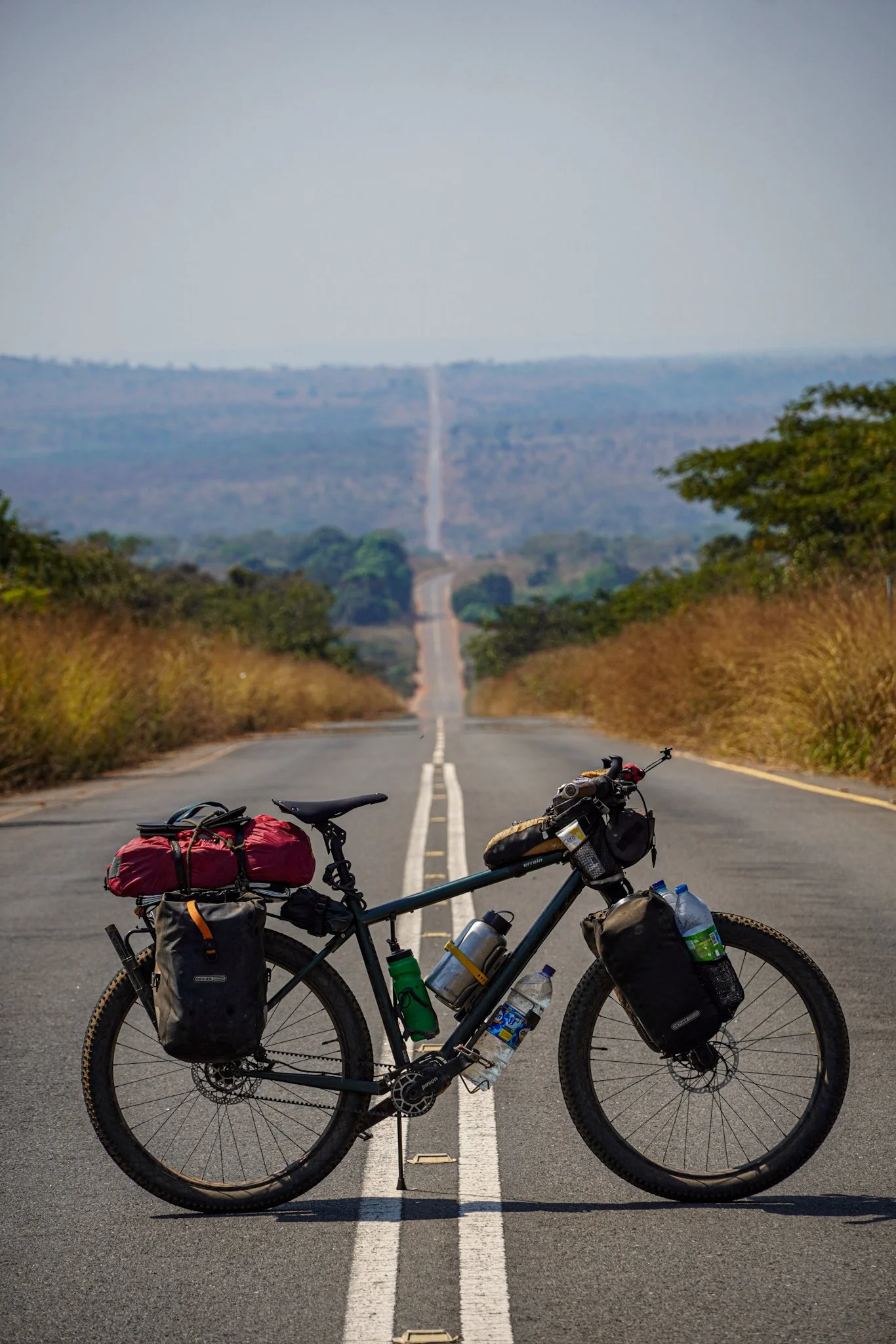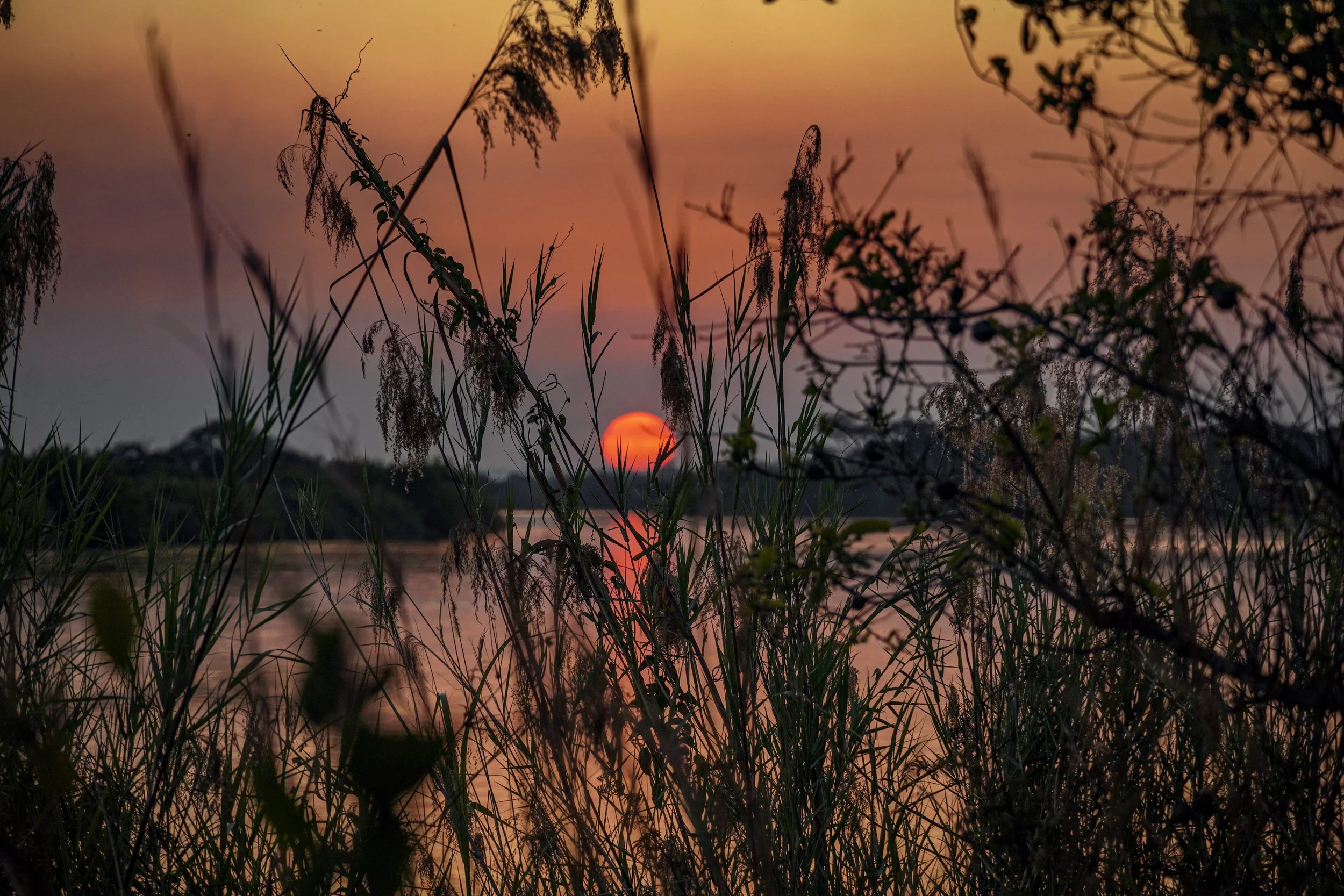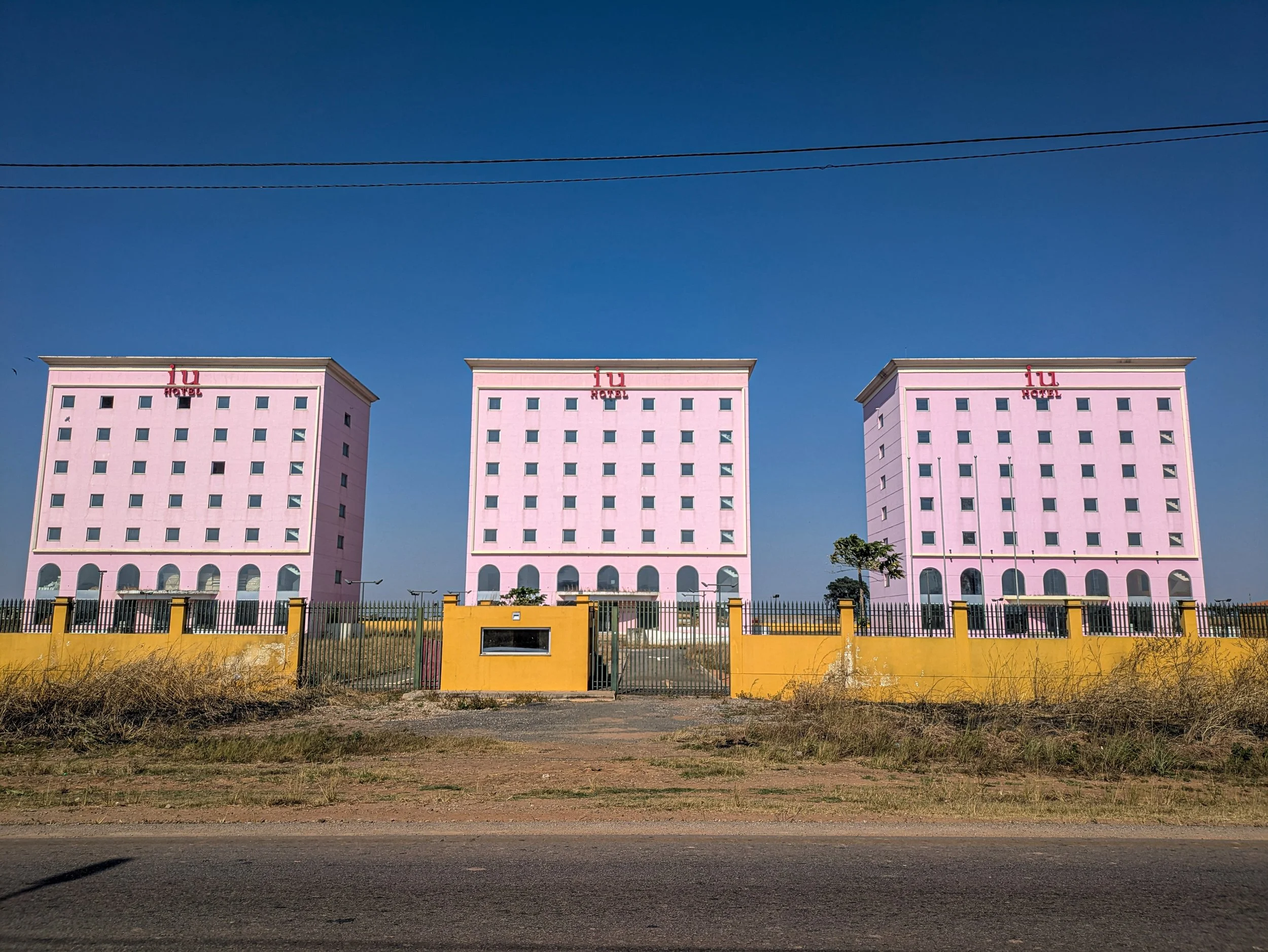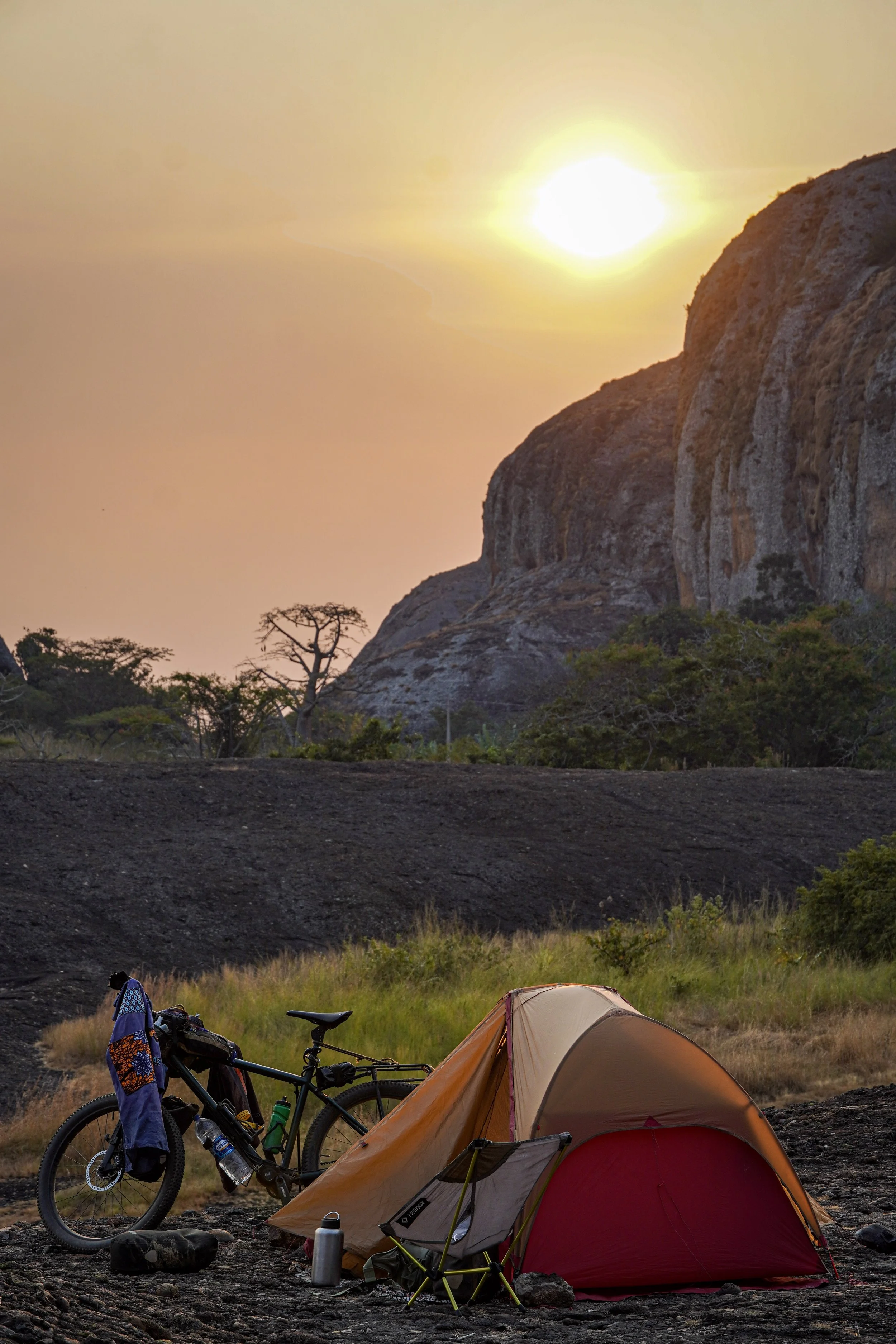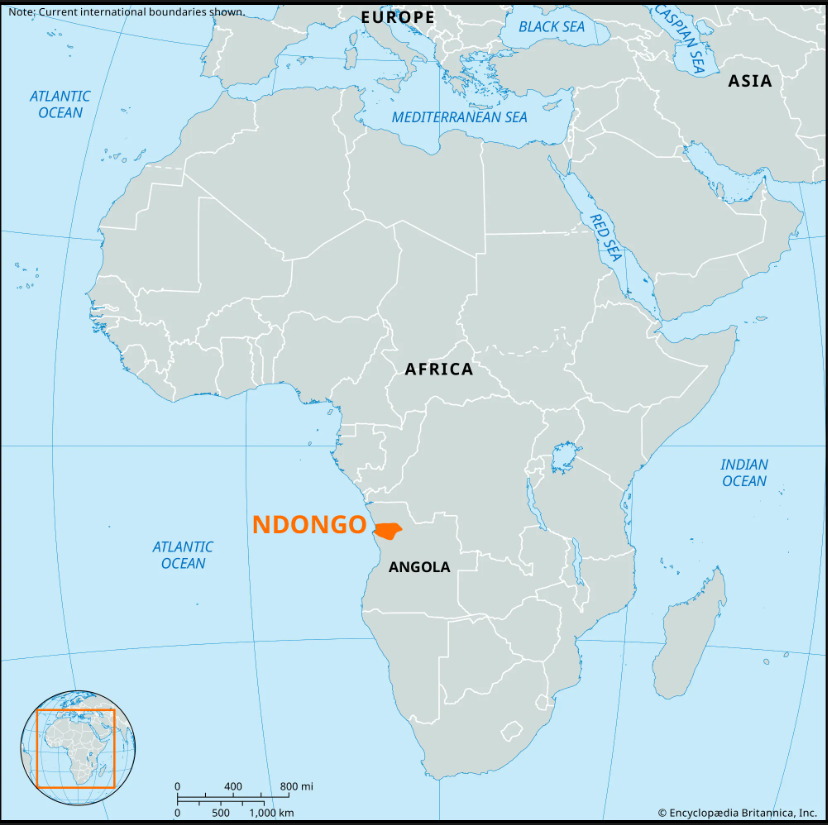Across Africa Part 11: Big Falls and Beautiful Camps
Malaria for the third time was pretty much like malaria the first, but from shivering in a down jacket when the air temperature was 30°C, to being topless and pouring with sweat 20 minutes later, I felt remarkably fine 48-hours later. Whether I still had malaria parasites lurking in my body, as they had before, was something I’d worry about later, but I cycled out of Gabela feeling like the last episode of Africa’s most deadly disease was just a bad nightmare and never actually happened.
The distance to Luanda, where this trip across Africa would end, was less than 400 km, but with a few weeks to spare and no wish to linger in a city I’d heard little good about, I decided to wiggle my way across the map and see as much as possible before reaching the capital — adding another 1,200 km to the ride.
It was a sensible decision. Cycling through western Angola was nothing short of spectacular. Less of the wild and remote dirt tracks I had faced when arriving in the east of the country, but some beautiful places to ride and camp, as I hope the pictures in this post show.
First camp out of the town of Gabela was another great one. I had seen the boulder from the road and used google satellite to follow small tracks to reach its base, hoping it would be possible to climb to the top. This was one of the first times since I had arrived in Angola where the mobile network was consistently strong (note the mobile phone tower to the left of the pic).
While the MSR Freelite tent isn’t fully freestanding (the bottom corners need to be staked out) I rarely had a problem finding loose rocks, or even using my bicycle.
Sunrise the next morning. The white marks on the rocks are from cassava, grown in the fields around, being dried and pummelled to make cassava flour.
Most of the roads I cycled on in western Angola were paved, with little traffic.
A lucky find the next night, helped largely by viewing the satellite map which showed some bare rock within the bush. I followed a narrow footpath 1km from the road to where the long grass gave way to a perfect platform of rocks.
Shade stop. It was now June, which is the coolest time of the year. Nowhere was particularly hot, with temperatures no higher than around 30C.
Fuel re-fill. Finding fuel (petrol) for my stove was never a problem. I most often filled up in service stations, but on occasion needed to fill up in villages where petrol is sold in 1 litre bottles like the one pictured. Petrol in Angola is amongst the cheapest in Africa (only Libya has cheaper fuel) with 1 litre costing around 300 kwanza (£0.25). I only needed 500ml, so gave the other half of this bottle back.
Another fuel stop. Beer is sold widely in Angola, but rarely in small villages like this would I find it ice cold, which it was. I had already decided where I would camp for the night, so cycled a short way into a village looking for any food provisions and a shop. I found tomatoes and beer.
And one for the road, or rather camp. A useful side mesh pocket in my hip bag.
Waterfalls over the River Cuanza. I spent another hour trying to find somewhere close to the river to camp.
And found this spot, allowing me access to the river to wash and collect water to cook with.
With a nice sunset view.
The river was covered in mist when I woke the next morning, clearing as the sun rose and I took this pic with the drone.
Another tank in the bush. I probably cycled past a few in Angola without noticing them.
The Chinese influence was notable everywhere in urban Angola. These pink hotels beside the railway on the way out of the town of Malanje, were identical to others I had seen in other major towns. None were in use, so just sat there falling into disrepair. Meanwhile Angola has a debt to China that surpasses all other countries on the continent!
Looks like avocado sandwiches again today.
The joy of tubeless tyres. No need to worry about punctures, unless you are unlucky enough to ride over something like a nail, which can’t be left in a tyre like this thorn can.
Magical camp! One of the reasons I made the wiggle back inland was to cycle to and see this waterfall. Calandula Falls are amongst the largest in Africa, but like most sites in Angola, little-visited. These are much more easily accessed from Luanda by road (paved all the way) compared to others I had seen in Angola, but I had this pitch to myself.
I can’t say I slept particularly well - the sound of the waterfall could be heard a long way from where I had pitched. My tent was soaked in the morning, but I could worry about that later.
With places like this, Angola has tremendous tourism potential, but the country lacks the infrastructure that many visitors would expect, and can find in neighbouring countries like Zambia and Namibia. Angola also lacks the big animals that the majority of people making a trip on the continent come to see.
A day’s ride from that spectacular waterfall brought me here. The black rocks of Pungo Andongo are relatively well known in Angola, both for the beautiful rock formations and monoliths, as well as their folk history. This particular boulder pictured was something of a mission to scale, requiring me to take the bags off the bike and transport both up to the top separately.
But it was worth it of course. Sunrise is always magical when elevated from the surrounding landscape.
A furry friend had found a home in one of my bike bags overnight. Not so easy to identify, but given its size I wasn’t going to get too close, and managed to release him with the help of a stick.
I always find space in a pannier for the things that matter. I consumed a lot of passion fruit in Angola.
Birds of prey, such as this crowned eagle, are usually where they should be - up in the sky and beyond the reach of foolish humans. At first I thought this bird, sat outside a local shop, was injured. I then realised it was just tied up. When I asked the shopkeeper why the bird was tied up, his explanation was simply so that people can come and see it. Despite the illegality of capturing protected birds, sadly conservation of the environment is something most Angolans have little awareness or education about.
Especially when many children have no school to attend.
More black rocks and another special camp. Before Angola became a Portuguese colony, this part of Africa was part of an African kingdom named Ndongo, made famous by a fearless Queen, who fought to resist Portuguese expansion.
The Kingdom of Ndongo was an early modern African state between 1518-1683.
Queen Nzinga is a familiar face in Angola. She ruled the Kingdom of Ndongo between 1624-1663 and is best remembered for resisting Portuguese colonisation and fighting oppression.
The night sky didn’t disappoint.
Aside from their beauty, the rocks here at Pungo Ndongo are also said to hold the footprints of Queen Nzinga.
Found! If there were any truth in this, the Queen would have had enormous feet.
Meanwhile the police here were either acting independently in wanting to escort me, or more likely following instructions from other police. After taking my photo and phone number, this guy turned back.
A day’s ride from Pungo Andongo, and dropping almost 1000m in altitude, I was back beside the River Cuanza again, and crossing one of the few bridges that wasn’t destroyed during the civil war.
Finding somewhere to camp was harder than I imagined. The riverbank was mostly all jagged rocks and dense bush, but I eventually managed to find a soft and flat spot a short distance back from the raging river.
Despite flying this drone hundreds of times, I still get a little nervous launching it into the air, especially over water with birds swooping around. A single clip from a wing could send it plummeting into the river or onto the rocks. Overconfidence led to me losing the same type of drone a few years ago while cycling in Georgia, so I’ve tried to be more cautious with this one.
Carrying a drone has allowed me to get a lot of photos that would have been impossible otherwise. The River Cuanza has a few hundred metres of elevation to drop before entering the Atlantic Ocean west from here.
A little more dirt-track detours, but most of the riding I would do between here and Luanda was on paved roads.
And relax. Good value for £9 per night, although it was next to the main road leading towards Luanda. The capital was just 200km away, and connected by a road that I imagined would just get busier the closer I got to Luanda. Fortunately I had time for one more detour before I reached the end of this trip.
Enjoyed this post? You can support my travels and ongoing content creation by clicking on the link below. It’s a great motivation to continue sharing. Thanks






